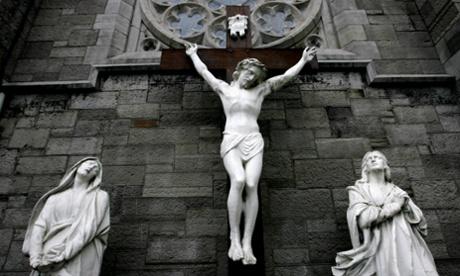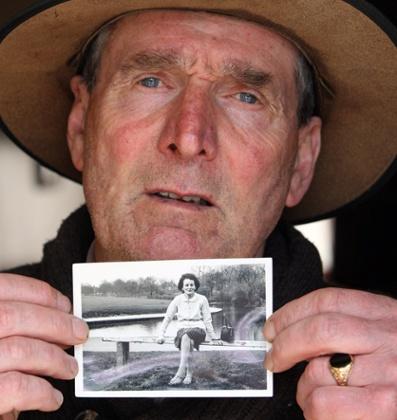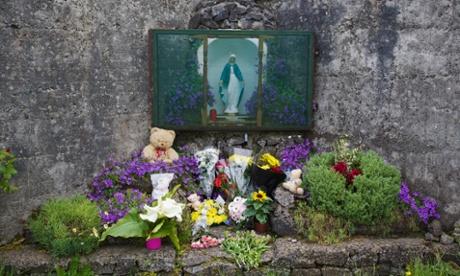|
The mystery of the missing remains of the Tuam babies
By Sandra Jordan
When Catherine Corless walked through a housing estate in Tuam, County Galway, with Judge Yvonne Murphy, head of the government Commission of Investigation into Mother and Baby Homes, she pointed to the playground.
It is a year since the story of what took place here broke. What became the Tuam Babies scandal, when the headline of “800 Children Dumped in Septic Tank” went around the world. It was Corless who told the media. She was later upset by inaccuracies - she never suggested all the bodies were in a septic tank or that any had been dumped. Researching the St Mary’s Home for unmarried mothers for a local history annual, Corless obtained death certificates for 796 children who died at the Tuam home, run by the Bon Secours Sisters on behalf of Galway County Council from 1925 to 1961. But there were only official burial records for two children. Corless discovered that in 1975 two boys, playing in wasteland at the former home site, fell into a tank containing children’s skeletons - no one knows how many. Local residents erected a little grotto. “Most of the deceased were newborns up to two years old,” says Corless. Were these some of the missing 794 children? Not all would have fit into a septic tank. She interviewed elderly residents who had witnessed night time burials from their upstairs windows in houses that overlooked the home’s eight foot walls. “I only go by maps and records,” says Corless, “that’s why I think the playground is where the bodies are most likely to be.” Under the Freedom of Information Act, Corless requested Galway County Council’s records on St Mary’s from 1925 to 1961. She was refused. But she was given documents from the 1970s, including an official map of the present day estate the council built on the site. “They obviously didn’t see the importance,” said Corless. “There is an area across the map marked “Burial Ground”, she says. “First, the houses were built, around that area. Finally a playground was built on part of the burial ground itself.” Minutes from a Tuam Council meeting call for “due care and sensitivity” when building the playground because of the “children’s burial ground and adjoining burial ground,” Corless said. “The playground unnaturally big, it’s as big as the town playground.” The estate is full of young families, children who are perhaps playing over the remains of dead children who knew little happiness. Previous to the home, a workhouse occupied the site. Maps from its time indicate the “burial ground” area includes cesspit caverns from workhouse days. Could the burial ground relate to remains of people who died at the workhouse? “No,” says Corless. “Some were buried by the North Wall of the site, others in the pauper’s grave in the town cemetery.” Corless urged Judge Murphy to use special probing equipment to search for human remains. “People with siblings buried there want their relatives given proper burials”, says Corless. Ita Mangan is a barrister for the Mother and Baby Homes Commission. Could they exhume remains? “If the commission decided to do it, they could do it,” she says. “But absolutely no decision has been made.” The Bon Secours sisters say they will cooperate with the commission. But they say they know nothing of burials as they handed all their documents to Tuam Council in 1961. Their PR company, The Communications Centre, told a French documentary maker: “You’ll find no mass grave, no evidence that children were ever so buried, and a local police force casting their eyes to heaven and saying “Yeah, a few bones were found – but this was an area where Famine victims were buried.So?” But responding to a relative seeking information on a former resident, a sister wrote in 2012 that as that child had died he was “most likely” to have been buried in a “general grave” at the back of the home. Whatever a “general grave” is. Catherine Corless says of the nuns: “They were above the law then and they think they are still above the law now.”
|
.
Any original material on these pages is copyright © BishopAccountability.org 2004. Reproduce freely with attribution.


